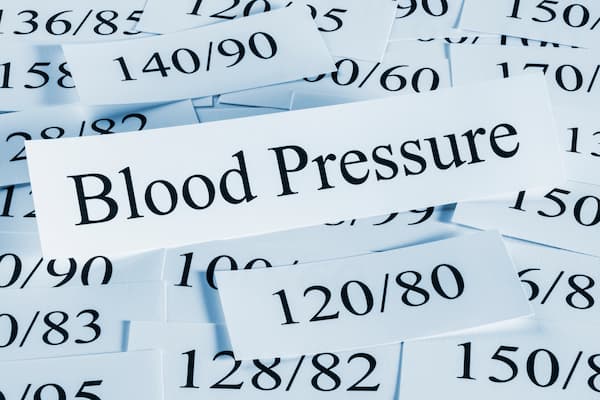Medical Services » Hypertension

Hypertension is the more clinical term for high blood pressure. This is a very common condition in the Unites States that affects nearly 50% of the population. While hypertension can lead to a variety of cardiovascular complications, it is a very manageable condition with proper treatment.
 Understanding Hypertension
Understanding HypertensionYour heart pumps blood throughout your body through its arteries. The blood pressure is the force of blood against your arteries as the heart pumps. Normal blood pressure rises and falls throughout the day and adjusts to regular daily activities.
Problems surface when blood pressure stays high for extended periods of time. When this happens, it causes the heart to work harder, leading to heart attack, stroke, aneurism, or other cardiovascular complications.
Blood pressure is tested by measuring the amount of pressure in your arteries in two different states of the heartbeat. You may have heard that normal blood pressure is “120 over 80.” The first number measures the pressure in your arteries when your heart beats. This is called the systolic pressure. The second number measures the pressure in your arteries between heart beats. This is the diastolic pressure.
Top Number (Systolic) = Artery pressure when your heart beats.
Bottom Number (Diastolic) = Artery pressure between heart beats.
Example: 120/80
Blood pressure increases when there is more resistance to the blood flow in your arteries. The resistance is caused by a combination of the amount of blood your heart pumps and the diameter of your arteries. The pressure measurement is reported as millimeters of mercury or “mm Hg.”
The American College of Cardiology and the American Heart Association published the following guidelines in 2017 defining hypertension.
| Blood Pressure Category | Systolic Blood Pressure | Diastolic Blood Pressure | |
|---|---|---|---|
| Normal | Less than 120 mm Hg | and | Less than 80 mm Hg |
| Elevated | Between 120 and 129 mm Hg | and | Less than 80 mm Hg |
| Hypertension | |||
| Stage 1 | Between 130 and 139 mm Hg | or | Between 80-89 mm Hg |
| Stage 2 | Greater than 140 mm Hg | or | Greater than 90 mm Hg |
As this chart illustrates, a blood pressure reading less than 120/80 is normal whereas a reading greater than 140/90 is stage 2 hypertension.
 Symptoms of Hypertension
Symptoms of HypertensionThe most troubling fact about hypertension is that because symptoms are not obvious, many people aren’t even aware of their condition.
You can have high blood pressure for many years without any symptoms. Occasionally, some people may experience headaches, breathing difficulties, or nosebleeds, but these symptoms are vague and don’t often occur until the condition is critical.
Without treatment, serious health conditions like heart disease and stroke can happen. The good news is that it is easily detectable, treatable, and manageable.
There are two types of high blood pressure, known as primary and secondary hypertension. Primary hypertension, also referred to as essential hypertension, gradually develops over many years, and there is no identifiable cause.
 Secondary hypertension, on the other hand, is known to be caused by underlying conditions such as:
Secondary hypertension, on the other hand, is known to be caused by underlying conditions such as:
Both primary and secondary hypertension are treatable.
Hypertension has a few common aspects, known as risk factors, which contribute to the onset of the condition. These risk factors include:
While hypertension is most common in adults, a growing number of children have high blood pressure, which is typically due to an unhealthy diet and lack of exercise.
When high blood pressure is not addressed and the condition goes uncontrolled for an extended time, serious, and sometimes fatal, complications can occur.
Unmanaged hypertension leads to:
While hypertension can have serious and fatal consequences, we reiterate that the condition is easily identified and treatable.
 Hypertension is typically diagnosed during a routine wellness examination. A blood pressure cuff and a stethoscope or an electronic sensor will be used to get an accurate reading. Two or more readings at separate appointments are typically necessary before making a diagnosis.
Hypertension is typically diagnosed during a routine wellness examination. A blood pressure cuff and a stethoscope or an electronic sensor will be used to get an accurate reading. Two or more readings at separate appointments are typically necessary before making a diagnosis.
The initial treatment for hypertension typically includes lifestyle adjustments of one or more of the following:
When necessary, medication is prescribed to manage hypertension. The medication or combination of medications will depend on the individual. Lifestyle and underlying medical conditions play a factor in medication selection.
The doctors at Rocky Mountain Diabetes Center are endocrinology experts and highly trained to identify and effectively treat hypertension and other underlying conditions.
If you or someone you love is experiencing any of the symptoms or conditions above, call Rocky Mountain Diabetes for an appointment, or fill out the form below.